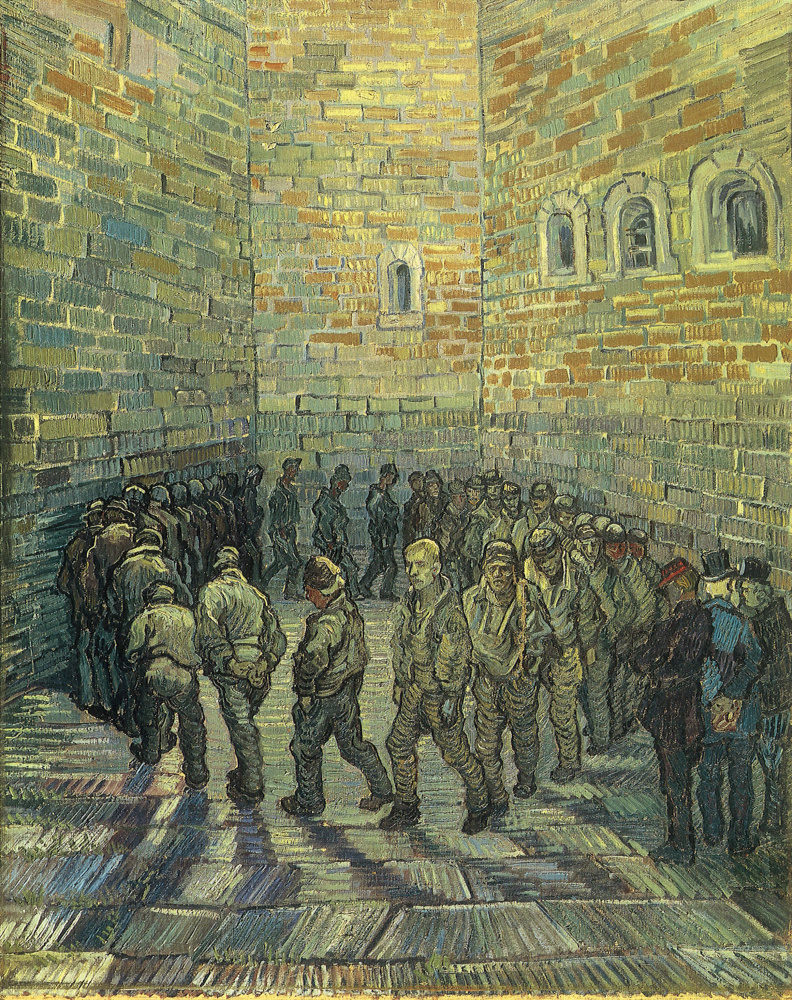log in
Enter site
Login to use Arthive functionality to the maximum
Prisoners Exercising (After Doré)
Vincent van Gogh • Painting, 11.02.1890, 80×64 cm
Description of the artwork «Prisoners Exercising (After Doré)»
The winter of 1890 became for Vincent Van Gogh one of the most difficult in his life. He lived in the psychiatric hospital Saint-Paul-de-Mausole and passionately dreamed of being released, but the doctors decided to postpone his discharge until the spring. The artist fell into depression, was dispirited and felt trapped. On the one hand, he was physically locked in four walls, and on the other hand he was held captive by the disease that limited his freedom and the ability to control his own life. In February 1890, at the end of that terrible winter, van Gogh painted Prisoners Exercising after Gustave Doré.
The feeling of despair and isolation was intensified by the fact that Vincent could no longer paint as much as before. In the hospital, the artist had a small studio, and in the warmer months, he went to work in an open air under the supervision of a nurse. However, with the onset of winter, that opportunity disappeared, and Van Gogh once again felt like he was in prison. In those cold months, he painted many copies of the works of other artists. In a letter to Theo he complained: "I have tried to copy the “Men Drinking” by Daumier and the “Convict Prison” by Doré; it is very difficult." In the same letter, he mentioned his copies of Delacroix and Millet's paintings.
Engraving after an original drawing by Gustave Doré was published in 1872 in the book London, a Pilgrimage, written by William Blanchard Jerrold. Van Gogh was a great connoisseur of English engravings and began to collect them during his life in London. No wonder Vincent chose this story for the picture, while being imprisoned in a mental hospital in Saint-Rémy. The artist considered prisoners, glumly wandering along an endless circle surrounded by high brick walls, pressing from all sides, as a symbol of his own life. And in the man depicted closest to the viewer, one can easily discern the features of the artist.
The feeling of despair and isolation was intensified by the fact that Vincent could no longer paint as much as before. In the hospital, the artist had a small studio, and in the warmer months, he went to work in an open air under the supervision of a nurse. However, with the onset of winter, that opportunity disappeared, and Van Gogh once again felt like he was in prison. In those cold months, he painted many copies of the works of other artists. In a letter to Theo he complained: "I have tried to copy the “Men Drinking” by Daumier and the “Convict Prison” by Doré; it is very difficult." In the same letter, he mentioned his copies of Delacroix and Millet's paintings.
Engraving after an original drawing by Gustave Doré was published in 1872 in the book London, a Pilgrimage, written by William Blanchard Jerrold. Van Gogh was a great connoisseur of English engravings and began to collect them during his life in London. No wonder Vincent chose this story for the picture, while being imprisoned in a mental hospital in Saint-Rémy. The artist considered prisoners, glumly wandering along an endless circle surrounded by high brick walls, pressing from all sides, as a symbol of his own life. And in the man depicted closest to the viewer, one can easily discern the features of the artist.


